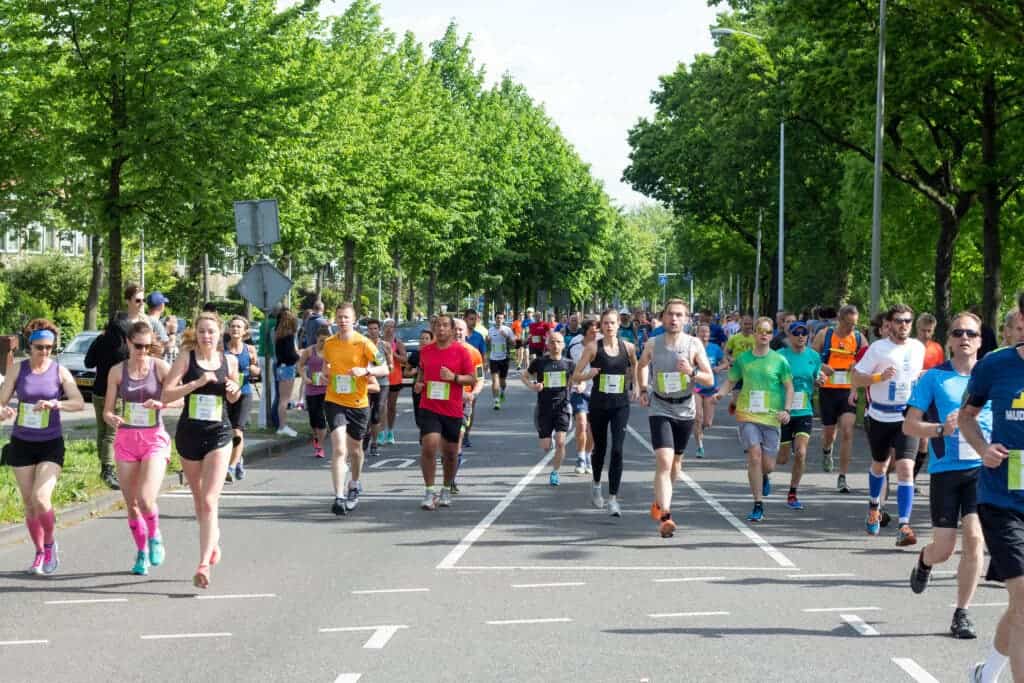It was a cold misty morning in Vienna when Eliud Kipchoge made history. The Kenyan runner finished an unofficial marathon in a once-inconceivable time: 1 hour 59 minutes and 40 seconds for the 26.2 miles (42.6 kilometers).
You’d be excused for thinking that Kipchoge is some form of superhuman performer. For most of us, even finishing a marathon seems like a far-fetched dream. But while this under-two-hour performance is groundbreaking, you don’t really need superhuman abilities to finish a marathon in good time, a new study has shown.

“Athletics is not so much about the legs. It’s about the heart and mind,” Kipchoge once said, and he was pretty on point. The key to a good marathon is not in the legs — it’s in the lungs.
Whenever we exercise or run, we start to breathe more heavily. That’s because our body requires more oxygen to power our muscles; the more we intensify our workout, the more heavily we breathe. There’s a limit to this: it’s called VO2 max, or the maximum volume of oxygen you can use. This VO2 max also isn’t fixed in time, you can improve it by being active and constantly pushing your limits, but it can also drop if you lead a sedentary lifestyle.
A study carried out by University of Exeter researchers in collaboration with Nike analyzed the VO2 max and other physiological requirements that are necessary to run a two-hour marathon — but the findings apply to more than just elite athletes, they also apply to regular people.
For the study, the researchers analyzed the outdoor running test of 16 athletes in the selection stage of Breaking2, a project by Nike to break the two-hour barrier of a marathon, accomplished by Kipchoge in 2019. They found that a 59kg runner would need to take in about four liters of oxygen per minute to maintain a two-hour marathon pace (21.1 km/h).
At marathon pace, elite runners can take in oxygen twice as fast as a “normal” person of the same age and weight, even when sprinting, according to VO2 measurements. Still, this difference wasn’t as striking as high as researchers initially expected. Runners actually need to have several characteristics for a good marathon performance, it’s not just the VO2 max.
Another important parameter is the so-called “lactate threshold”: the intensity after which lactic acid starts to quickly accumulate (and which consequently makes you more fatigued). The lactate threshold is often defined as 85% of maximum heart rate, and elite athletes seem to have developed a sense navigating under this threshold.
Runners with better performances also need a good running “economy”. This means that the body must use oxygen efficiently, both internally and through effective running action. Having all these features (VO2 max, lactate threshold, economy) is basically what you need to achieve a good performance in any given race.
“The runners we studied – 15 of the 16 from East Africa – seem to know intuitively how to run just below their ‘critical speed’, close to the ‘lactate turn point’ but never exceeding it,” Professor Andrew Jones, lead author of the study, said in a statement. “This is especially challenging because – even for elite runners – the turn point drops slightly over the course of a marathon.”
So in a sense, Kipchoge was right: it’s not really about the legs. You need a good heart, good lungs, and a healthy mindset to go through the effort efficiently. Whether or not you’re planning on running a marathon anytime soon, that’s a lesson worth remembering.
The study was published in the Journal of Applied Physiology.


